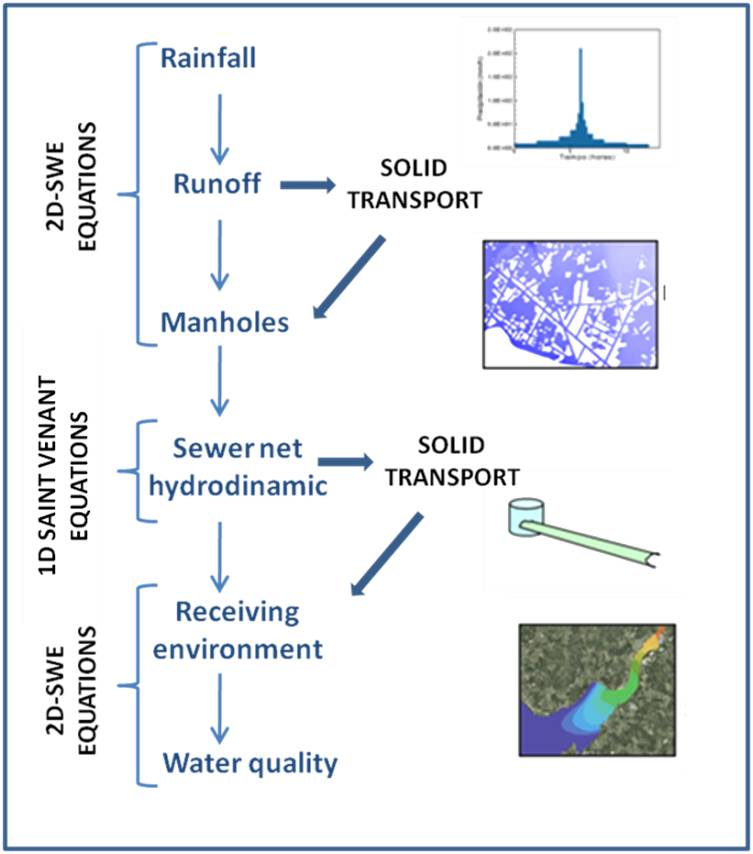MODUS
Development, calibration and experimental validation of a numerical model for the analysis and design of urban drainage systems
Funders
Xunta de Galicia. Consellería de Innovación e Industria
Participants
Universidade da Coruña
Duration
2009 - 2012
Researchers
Luis Cea, Jerónimo Puertas, Ignacio Fraga
Description
The aim of this project is to develop a numerical tool to predict flood inundation and sediment loads generated in urban areas. This numerical tool will be used to analyse and design sustainable urban drainage systems (SUDS). The project activities include numerical and physical modelling, as well as the application of the model developed to a real urban drainage network.
As a result of the project, a distributed numerical model for urban drainage simulation (MODUS) will be developed, calibrated and validated with experimental and field data. The model will integrate the following processes: rainfall-runoff transformation, surface drainage of the rainfall-runoff, sediment transport due to surface-runoff, drainage through the sewer system, dilution and transport of the sediment load spilled in the receiving river or coastal environment.
The availability of numerical tools like the model which will be developed in this project, and their use by the hydraulic engineering consultancies, will allow increasing the importance of environmental studies in engineering projects, as well as the environmental sensitivity in this sector. Considering the present urbanisation trends, it is important to use as many tools as possible for a sustainable management and planning of urban development. The model MODUS aims to contribute in this line, as a support tool for the water administration in the hydrological planning.
The main applications of the model MODUS will be: 1) urban flood inundation modelling; 2) computation of discharges and solid loads generated during extreme precipitation events; 3) evaluation of the number, pollution and intensity of untreated stormwater spills to the receiving river per year.
The numerical tool developed in this project will be calibrated and validated with laboratory and field experimental data, and it will be applied to a real urban drainage system. These three components of the project (numerical modelling, experimental validation and practical application) complement themselves, and are well balanced among the activities of the project.

Keywords
Urban hydrology, urban drainage systems, 2D numerical modelling, experimental validation
Related works
- Fraga, I., Cea, L., Puertas, J. "Integrated 2D model of rainfall-runoff and 1D model of sewer network". 9th International Conference on Urban Drainage Modelling, Belgrado, Serbia. 3-7 Septiembre 2012 9UDM_Poster
- Cea, L., Garrido, M., Puertas, J.,Jácome, A., del Río, H., Suárez, J. (2010) “Overland flow computations in urban and industrial catchments from direct precipitation data using a two-dimensional shallow water model”. Water Science and Technology, Vol.62 (9) pp.1998-2008
- Cea, L., Garrido, M., Puertas, J. (2010) “Experimental validation of two-dimensional depth-averaged models for forecasting rainfall-runoff from precipitation data in urban areas”. Journal of Hydrology. Vol.382, pp.88-102
- Cea, L., Vázquez-Cendón, M.E. (2010) “Unstructured finite volume discretisation of two-dimensional depth averaged shallow water equations with porosity”. International Journal for Numerical Methods in Fluids, Vol.63 (8) pp.903-930











